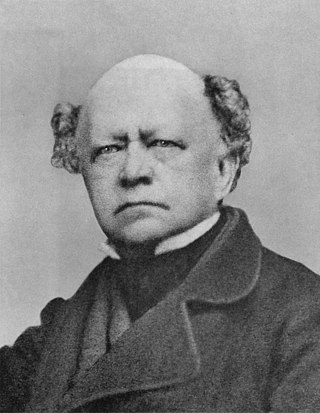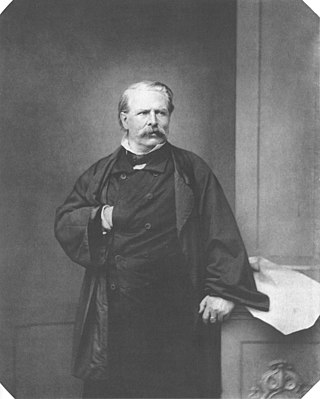| |||||
| Decades: | |||||
|---|---|---|---|---|---|
| See also: | Other events of 1775 List of years in Austria | ||||
Events from the year 1775 in Austria
| |||||
| Decades: | |||||
|---|---|---|---|---|---|
| See also: | Other events of 1775 List of years in Austria | ||||
Events from the year 1775 in Austria
| | This section needs expansion. You can help by adding to it. (October 2015) |
| | This section needs expansion. You can help by adding to it. (October 2015) |
| | This section needs expansion. You can help by adding to it. (October 2015) |

Ludwig Alois Friedrich Ritter von Köchel was an Austrian musicologist, writer, composer, botanist, and publisher. He is best known for cataloguing the works of Mozart and originating the 'KV-numbers' by which they are known.

1708 (MDCCVIII) was a leap year starting on Sunday of the Gregorian calendar and a leap year starting on Thursday of the Julian calendar, the 1708th year of the Common Era (CE) and Anno Domini (AD) designations, the 708th year of the 2nd millennium, the 8th year of the 18th century, and the 9th year of the 1700s decade. As of the start of 1708, the Gregorian calendar was 11 days ahead of the Julian calendar, which remained in localized use until 1923.

1706 (MDCCVI) was a common year starting on Friday of the Gregorian calendar and a common year starting on Tuesday of the Julian calendar, the 1706th year of the Common Era (CE) and Anno Domini (AD) designations, the 706th year of the 2nd millennium, the 6th year of the 18th century, and the 7th year of the 1700s decade. As of the start of 1706, the Gregorian calendar was 11 days ahead of the Julian calendar, which remained in localized use until 1923.

Johann Bernhard Fischer von Erlach was an Austrian architect, sculptor, engraver, and architectural historian whose Baroque architecture profoundly influenced and shaped the tastes of the Habsburg Empire. His influential book A Plan of Civil and Historical Architecture (1721) was one of the first and most popular comparative studies of world architecture. His major works include Schönbrunn Palace, Karlskirche, and the Austrian National Library in Vienna, and Schloss Klessheim, Holy Trinity Church, and the Kollegienkirche in Salzburg.

Moritz von Schwind was an Austrian painter, born in Vienna. Schwind's genius was lyrical—he drew inspiration from chivalry, folklore, and the songs of the people. Schwind died in Pöcking in Bavaria, and was buried in the Alter Südfriedhof in Munich.

Johann Lukas von Hildebrandt was an Austrian baroque architect and military engineer who designed stately buildings and churches and whose work had a profound influence on the architecture of the Habsburg Empire in the eighteenth century. After studying in Rome under Carlo Fontana, he constructed fortresses for Prince Eugene of Savoy during his Italian campaigns, becoming his favorite architect. In 1700 he became court engineer in Vienna, and in 1711 was named head of the court department of building. He became court architect in 1723. His designs for palaces, estates, gardens, churches, chapels, and villas were widely imitated, and his architectural principles spread throughout central and southeast Europe. Among his more important works are Palais Schwarzenberg, St. Peter's Church, and Belvedere in Vienna, Savoy Castle in Ráckeve, Schönborn Palace in Göllersdorf, and Schloss Hof.

Gainfarn is a village on the western edge of Bad Vöslau, in Lower Austria, Austria. It is an urban quarter and a cadastral community within Bad Vöslau city.

Johann Peter Krafft was a German-born Austrian painter who specialized in portraits, historical works, and genre scenes.

Johann Adam Klein was a German painter and engraver.

Thomas Ender was an Austrian landscape painter and watercolorist.

Franz Rumpler was an Austrian genre and landscape painter.

Johann Anton Graf von Pergen was a diplomat and statesman of the Habsburg monarchy, serving under four consecutive monarchs for more than fifty years. He was one of the most influential individuals in the reformist administration of Joseph II (1780-1790).

Events from the year 1760 in Austria
Henry III of Kuenring was a medieval Austrian ministerialis from the house of Kuenring and son of Hadmar II of Kuenring, who imprisoned King Richard the Lionheart at Dürnstein castle, and his wife Eufemia of Mistelbach. He was famously called the 'Hound of Kuenring', alongside his brother, Hadmar III of Kuenring, for their martial prowess. He married Adelheid of Falkenstein-Neuburg before 1205.

Schloss Rohrau is a castle in the town of Rohrau in Lower Austria, bordering on Burgenland. The building houses the art collection of the counts of Harrach.
Johann Baptist Klerr was an Austrian Kapellmeister and composer.
Anton Träg was an Austrian cellist and composer.

Karl Jakob Theodor Leybold was a German painter, engraver and lithographer.
Sebastian II Grabner zu Rosenburg und Pottenbrunn, also Sebastian von Grabner or Sebastian Grabner the Younger, was a nobleman of the Archduchy of Austria under the Enns.
![]() Media related to 1775 in Austria at Wikimedia Commons
Media related to 1775 in Austria at Wikimedia Commons